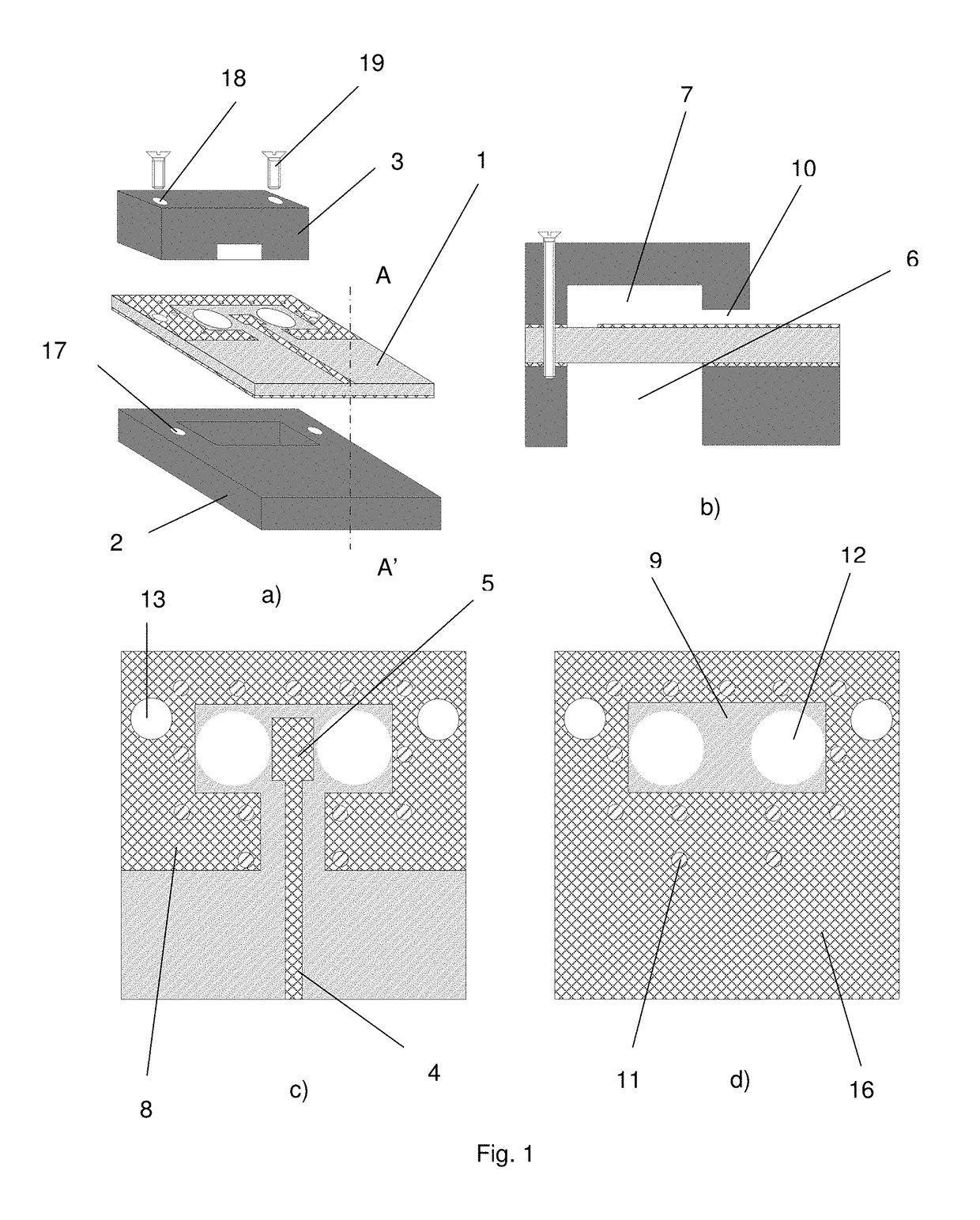Waveguide-to-microstrip transition
a waveguide and microstrip technology, applied in the field of microwave frequency devices, can solve the problems of poor performance, high manufacturing cost, and high complexity, and achieve the effect of low insertion loss and wide bandwidth
- Summary
- Abstract
- Description
- Claims
- Application Information
AI Technical Summary
Benefits of technology
Problems solved by technology
Method used
Image
Examples
Embodiment Construction
[0063]A waveguide-to-microstrip transition comprises an input waveguide piece 2 having a through-hole defining an open waveguide channel 6, a short-circuited waveguide piece 3 having a blind cavity defining a closed waveguide channel 7, and a dielectric board 1 placed between the waveguides pieces 2, 3. The top surface of the dielectric board 1 comprises a microstrip transmission line 4, a microstrip probe 5 formed as an extension of the microstrip transmission line 4, and a contact metal layer 8 surrounding the microstrip probe 5 with no electrical connection to the microstrip probe 5 and the microstrip transmission line 4, wherein the contact metal layer 8 forms an internal area on the dielectric board 1, the internal area being a waveguide channel area 9.
[0064]The waveguide short-circuited piece 3 is located on the contact metal layer 8 and has a recess 10 in the area of the microstrip transmission line 4, while the bottom surface of the dielectric board 1 comprises a ground meta...
PUM
 Login to View More
Login to View More Abstract
Description
Claims
Application Information
 Login to View More
Login to View More - R&D
- Intellectual Property
- Life Sciences
- Materials
- Tech Scout
- Unparalleled Data Quality
- Higher Quality Content
- 60% Fewer Hallucinations
Browse by: Latest US Patents, China's latest patents, Technical Efficacy Thesaurus, Application Domain, Technology Topic, Popular Technical Reports.
© 2025 PatSnap. All rights reserved.Legal|Privacy policy|Modern Slavery Act Transparency Statement|Sitemap|About US| Contact US: help@patsnap.com


